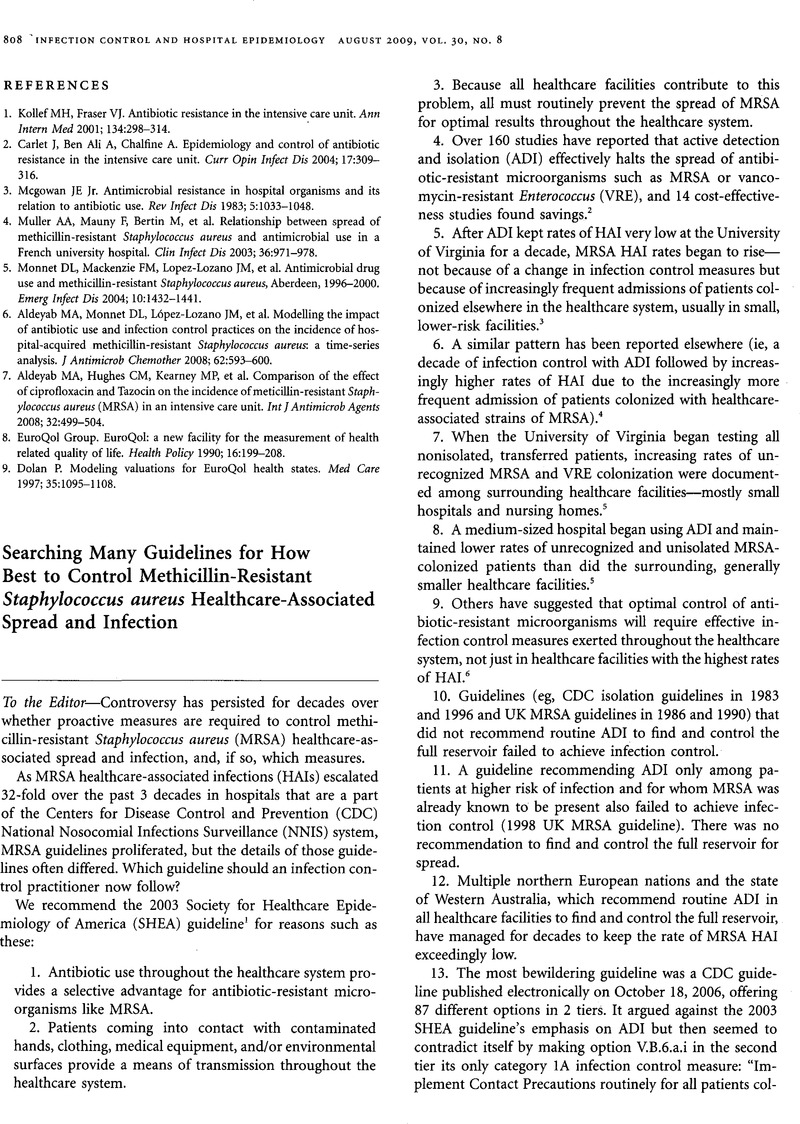Crossref Citations
This article has been cited by the following publications. This list is generated based on data provided by Crossref.
Garcia, Robin
Vonderheid, Susan
McFarlin, Barbara
Djonlich, Michelle
Jang, Catherine
and
Maghirang, Jeffrey
2011.
Cost and Health Outcomes Associated With Mandatory MRSA Screening in a Special Care Nursery.
Advances in Neonatal Care,
Vol. 11,
Issue. 3,
p.
200.
Lee, Andie S.
Huttner, Benedikt
and
Harbarth, Stephan
2011.
Control of Methicillin-resistant Staphylococcus aureus.
Infectious Disease Clinics of North America,
Vol. 25,
Issue. 1,
p.
155.
Jarvis, William R.
Jarvis, Ashley A.
and
Chinn, Raymond Y.
2012.
National prevalence of methicillin-resistant Staphylococcus aureus in inpatients at United States health care facilities, 2010.
American Journal of Infection Control,
Vol. 40,
Issue. 3,
p.
194.
Lee, Andie S
Cooper, Ben S
Malhotra-Kumar, Surbhi
Chalfine, Annie
Daikos, George L
Fankhauser, Carolina
Carevic, Biljana
Lemmen, Sebastian
Martínez, José Antonio
Masuet-Aumatell, Cristina
Pan, Angelo
Phillips, Gabby
Rubinovitch, Bina
Goossens, Herman
Brun-Buisson, Christian
and
Harbarth, Stephan
2013.
Comparison of strategies to reduce meticillin-resistantStaphylococcus aureusrates in surgical patients: a controlled multicentre intervention trial.
BMJ Open,
Vol. 3,
Issue. 9,
p.
e003126.



